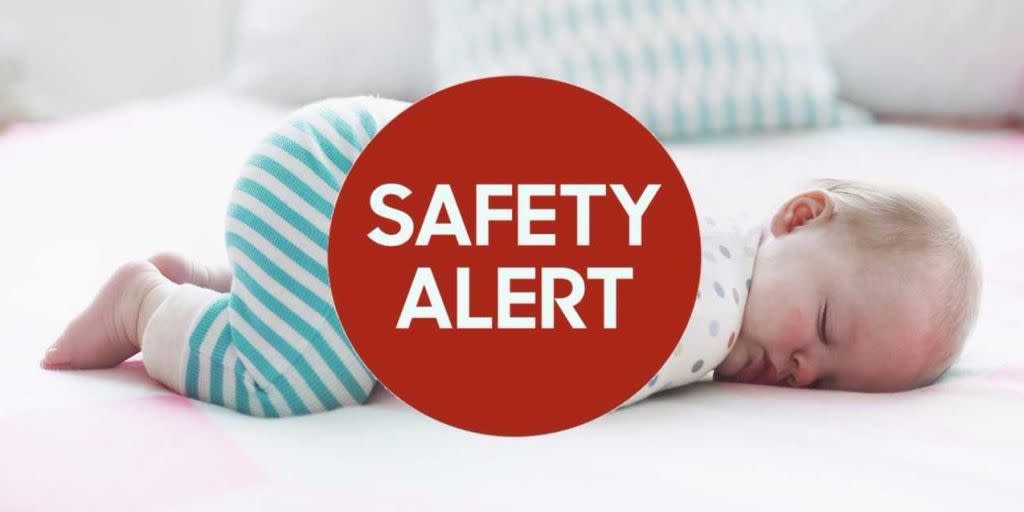Many Moms Aren't Putting Babies to Sleep Correctly — And It's Risking Their Lives

According to a study published in the medical journal Pediatrics, most moms still aren't putting their babies to sleep on their backs, a position that ultimately reduces a baby's chance of dying from SIDS and other fatal sleep-related conditions.
It's not that moms don't know this life-saving sleep safety tip, though — the study surveyed 3,297 mothers with children ages 2 months to 6 months and found that how women intended to put their babies to sleep didn't always match up in practice. While 77.3% mothers reported that they usually (but not always) place their sleeping babies supine, only 43.7% both recognized the method as superior to stomach-sleeping and actually did it.
"What was new and hadn't been explored before was this idea of what people intended to do versus what they actually do," Dr. Eve Colson, a professor of pediatrics at Yale School of Medicine and co-author of the study, told CNN. "What we found was that people intended to put their baby on their back but didn't always do that."
If most moms know that back sleeping — a practice that's been publicized by the Safe to Sleep campaign and affirmed by pediatricians since 1994 — is safer than stomach-sleeping, why not commit to it every single night? Turns out, new moms are turning to their own mothers and grandmothers (understandably so!) and are receiving and listening to advice that conflicts with their pediatrician's.
"Grandmothers and aunts and everybody have told (mothers), if they have babies sleep on their bellies, they're more comfortable; they're not going to choke," said Dr. Robin Jacobson (not involved in the study), a pediatrician at Hassenfeld Children's Hospital at NYU Langone Health. "And because of that, a new mom who doesn't really have a lot of information is using information from everybody else in their life."
According to the study, babies in communities or of cultures that rely more heavily on matriarchal advice than pediatrician intervention are more at risk for SIDS. "There's a lot more dependence on grandmothers and other senior family members as trusted sources, and lots of times, the information that you get from your family members is more persuasive than what you get from physicians and other sources," Moon (not involved in the new study) told CNN.

But we all do this — we take parenting advice from our moms and accept it 100% because they made us, raised us and heck, we turned out okay! Despite what our moms tell us, though, placing a baby on his or her back on a firm surface without pillows or blankets is the safest way to put your baby down to sleep, says the American Academy of Pediatrics.
While policy makers are brainstorming more ways to make this information more available to every mom out there, it's on us to put the method into practice — and to share the information with all the new moms in our lives. It's a baby's life at stake, after all.
Create a safe sleep environment for babies.
The American Academy of Pediatrics has thorough guidelines for safe sleep for babies. These include (but are not limited to):
Placing babies on their backs to sleep until the baby is 1 year old.
Using a firm sleep surface covered with only a tight-fitting sheet in a safety-approved crib or bassinet. (Note: Inclined sleepers are not safety-approved.)
Keeping cribs, bassinets and other sleeping areas free of any soft objects or loose bedding.
Sleeping in the same room, but not in the same bed, for the first 6 months to 1 year.
Using a pacifier at bedtime and naptime.
Consult the AAP for more safe sleep recommendations.
You Might Also Like

